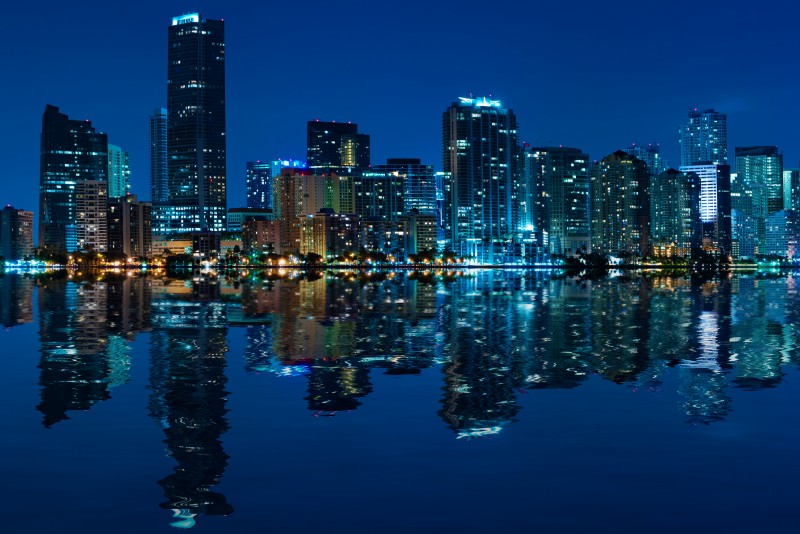
Miami is a city located on the Atlantic coast in southeastern Florida and the county seat of Miami-Dade County. The 42nd largest city proper in the United States, with a population of 419,777, it is the principal, central, and most populous city of the Miami metropolitan area, and the most populous metropolis in the Southeastern United States after Washington, D.C. According to the U.S. Census Bureau, Miami’s metro area is the eighth most populous and fourth-largest urban area in the United States, with a population of around 5.5 million.
Miami is a major center and a leader in finance, commerce, culture, media, entertainment, the arts, and international trade. In 2012, Miami was classified as an Alpha- World City in the World Cities Study Group’s inventory. In 2010, Miami ranked seventh in the United States in terms of finance, commerce, culture, entertainment, fashion, education, and other sectors. It ranked thirty-third among global cities. In 2008, Forbes magazine ranked Miami “America’s Cleanest City”, for its year-round good air quality, vast green spaces, clean drinking water, clean streets and city-wide recycling programs. According to a 2009 UBS study of 73 world cities, Miami was ranked as the richest city in the United States, and the world’s fifth-richest city in terms of purchasing power. Miami is nicknamed the “Capital of Latin America”, is the second largest U.S. city with a Spanish-speaking majority, and the largest city with a Cuban-American plurality.
Downtown Miami is home to the largest concentration of international banks in the United States, and many large national and international companies. The Civic Center is a major center for hospitals, research institutes, medical centers, and biotechnology industries. For more than two decades, the Port of Miami, known as the “Cruise Capital of the World,” has been the number one cruise passenger port in the world. It accommodates some of the world’s largest cruise ships and operations, and is the busiest port in both passenger traffic and cruise lines
Attractions
In addition to such annual festivals like Calle Ocho Festival and Carnaval Miami, Miami is home to many entertainment venues, theaters, museums, parks and performing arts centers. The newest addition to the Miami arts scene is the Adrienne Arsht Center for the Performing Arts, the second-largest performing arts center in the United States after the Lincoln Center in New York City, and is the home of the Florida Grand Opera. Within it are the Ziff Ballet Opera House, the center’s largest venue, the Knight Concert Hall, the Carnival Studio Theater and the Peacock Rehearsal Studio. The center attracts many large-scale operas, ballets, concerts, and musicals from around the world and is Florida’s grandest performing arts center. Other performing arts venues in Miami include the Herbert and Nicole Wertheim Performing Arts Center, Gusman Center for the Performing Arts, Coconut Grove Playhouse, Colony Theatre, Lincoln Theatre, New World Center, Actor’s Playhouse at the Miracle Theatre, Jackie Gleason Theatre, Manuel Artime Theater, Ring Theatre, Playground Theatre, Wertheim Performing Arts Center, the Fair Expo Center and the Bayfront Park Amphitheater for outdoor music events.
The city attracts a large number of musicians, singers, actors, dancers, and orchestral players. Miami has numerous orchestras, symphonies and performing art conservatories. Some of these include the Florida Grand Opera, FIU School of Music, Frost School of Music, Miami City Ballet, Miami Conservatory, Miami Wind Symphony, New World School of the Arts, New World Symphony Orchestra, as well as the music, theater and art schools of the city’s many universities and schools.
Miami is also a major fashion center, home to models and some of the top modeling agencies in the world. Miami is also host to many fashion shows and events, including the annual Miami Fashion Week and the Mercedes-Benz Fashion Week Miami held in the Wynwood Art District.
